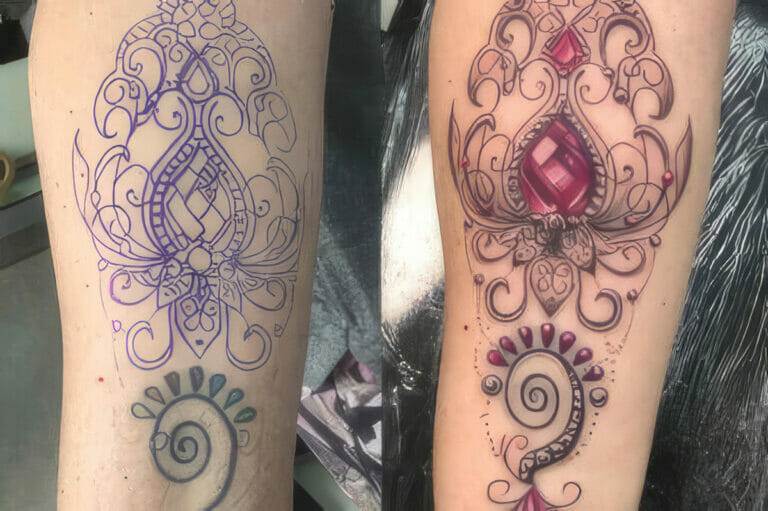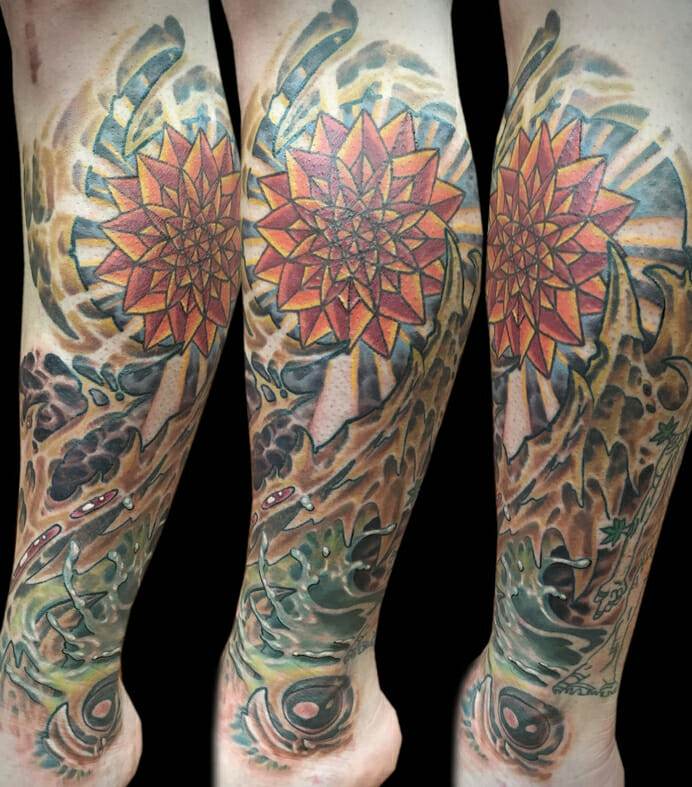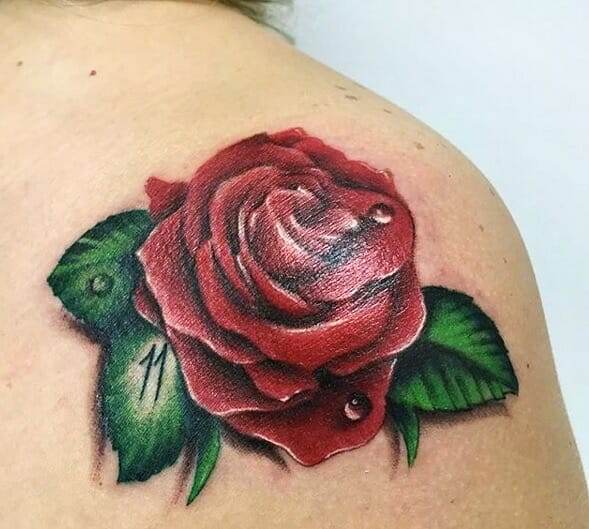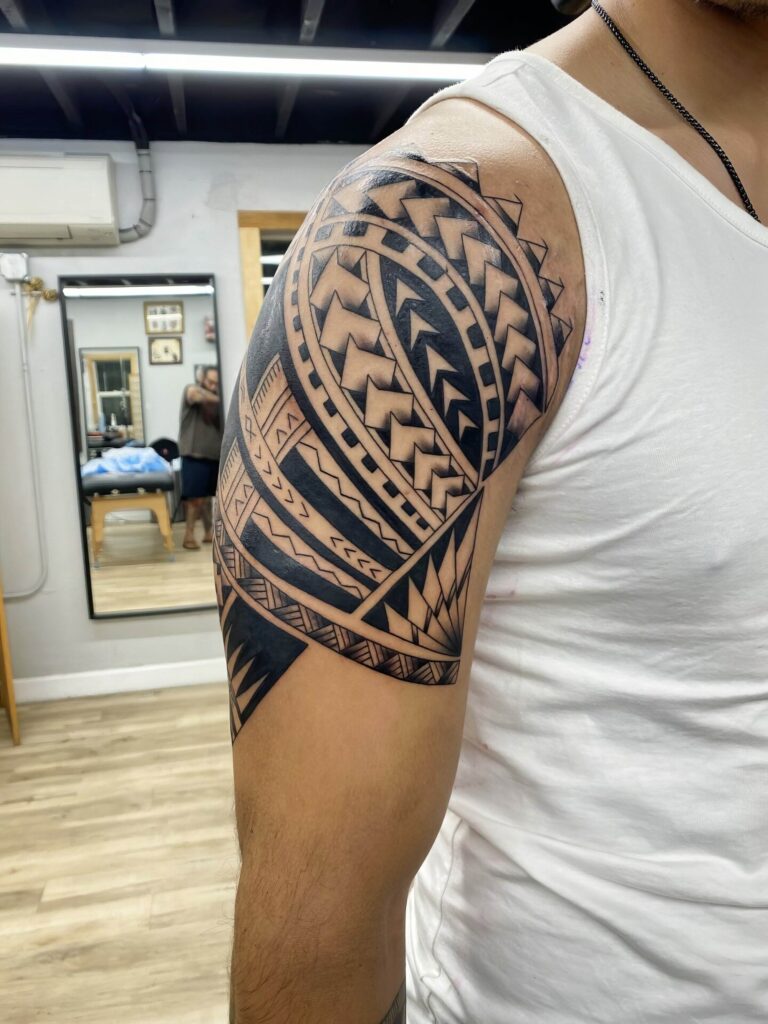Introduction
Tattoos are an expressive form of art that many individuals choose to showcase on their bodies, but the level of discomfort varies significantly depending on where on the body the tattoo is applied. Knowing which areas are more prone to pain can help prospective tattoo enthusiasts make informed decisions about their ink.
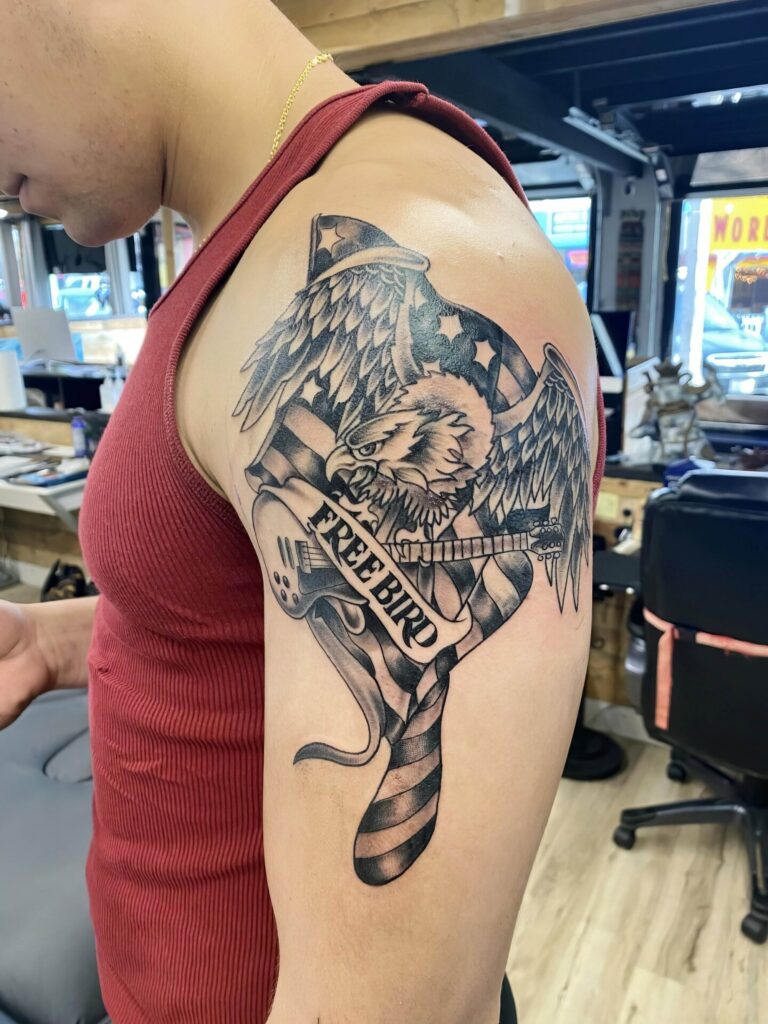
The Thrill and Pain of Tattoos
For many, the thrill of getting a tattoo can be accompanied by an undercurrent of anxiety surrounding the pain factor. While some areas are known for being more painful due to the density of nerve endings or proximity to bones, others provide a more manageable experience. It’s essential to understand these nuances:
- Pain is subjective: One person’s “intense pain” might be just a mild discomfort for another.
- Preparation can alter the experience: Being mentally and physically prepared can make a significant difference.
When considering getting a tattoo, it’s imperative to prioritize comfort while envisioning artwork as a lifelong commitment. Understanding which areas yield a more tolerable tattoo experience can enhance confidence and reduce potential regrets. As we delve deeper into this topic, we’ll explore the most and least painful places to get tattooed, along with the factors that intensify or diminish that pain. This journey through the world of tattoos will empower individuals to make informed choices tailored to their pain tolerance levels, ultimately leading to a more enjoyable tattooing process. So, let’s get started on the pathway to understanding tattoo pain better!
The Most Painful Places to Get Tattooed
Knowing the most painful areas for tattoos can be daunting yet incredibly valuable for anyone contemplating body art. Pain levels can vary significantly from person to person, but certain spots consistently rank high on the pain scale. Let’s take a closer look at these sensitive zones.
Ribs
Getting tattooed on the ribs often ranks as one of the most painful experiences due to the thin skin and proximity to bones. The ribs have a high concentration of nerve endings, and the tattoo needle’s vibrations can make the process feel more intense.
- Sensitivity Level: High
- Best For: Those with a high pain tolerance.
Many people report feeling “piercing” sensations when the needle goes over this area, making it essential to be mentally prepared.
Spine
The spine is another notoriously painful area to get a tattoo. Due to the vertebrae’s closeness to the skin and the abundance of nerve endings, tattooing here can be a jarring experience.
- Sensitivity Level: Very High
- Potential Regret: Some people wish they had chosen a less painful area after the fact.
Those with existing spinal tattoos often describe the experience as a mixture of discomfort and an adrenaline rush. It’s important to note that the sensation can vary significantly depending on the specific placement along the spine.
Armpits
Tattooing the armpit is one of the least popular choices for tattoo enthusiasts, and for good reason. This area is highly sensitive due to soft skin and high nerve density.
- Sensitivity Level: Extreme
- Pain Relief Tips: Consider taking breaks during the session.
Many tattoo seekers advise against armpit tattoos unless one is incredibly committed to a particular design. The intense pain often overshadows the excitement of getting inked here. Understanding these areas can help individuals make informed choices about their tattoo locations and prepare themselves mentally and physically for the experience.
The Least Painful Places to Get Tattooed
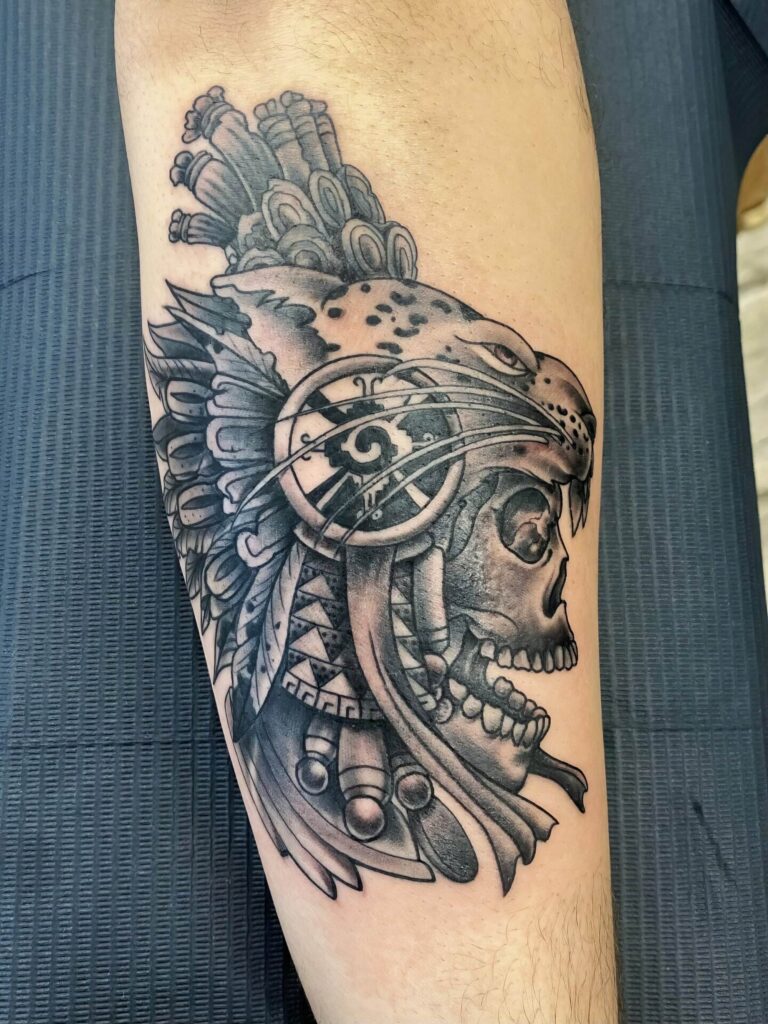
While some areas of the body are known for their intensity during the tattooing process, there are plenty of spots considered to be more forgiving when it comes to pain levels. Choosing a location wisely can significantly enhance the tattoo experience, especially for first-timers. Let’s explore some of the least painful places to get inked.
Forearm
The forearm is often celebrated as one of the most comfortable places to get tattooed. The skin in this area is generally thicker, and the presence of muscle helps to cushion the sensation of the needle.
- Sensitivity Level: Low
- Best For: First-time tattoo seekers looking for a manageable experience.
Many individuals appreciate that they can easily see their tattoo during the application process, which can serve as a confidence booster.
Calf
Tattooing the calf is another popular option for those looking to minimize discomfort. Similar to the forearm, the calf has more muscle mass, which helps to absorb the pain and provides a substantial surface area for artistic expression.
- Sensitivity Level: Low to Moderate
- Popularity: Ideal for larger designs without overwhelming pain.
People often find the calf area to be quite tolerable, with a good balance of visibility and comfort, making it a go-to spot for extensive designs.
Thigh
The thigh is frequently touted as one of the best places for a pain-free tattoo experience. The thick skin and ample muscle in this area minimize discomfort, contributing to a more enjoyable tattooing session.
- Sensitivity Level: Low
- Consideration: A larger canvas provides great flexibility for design choices.
Many find that thigh tattoos are not only less painful but also provide a more private area for body art, allowing for personal expression without constant visibility. Choosing one of these less sensitive areas can significantly alter the tattoo experience, making it a more pleasant one overall. This knowledge can empower individuals to embrace body art with excitement rather than anxiety about pain.
Factors Affecting Pain Levels
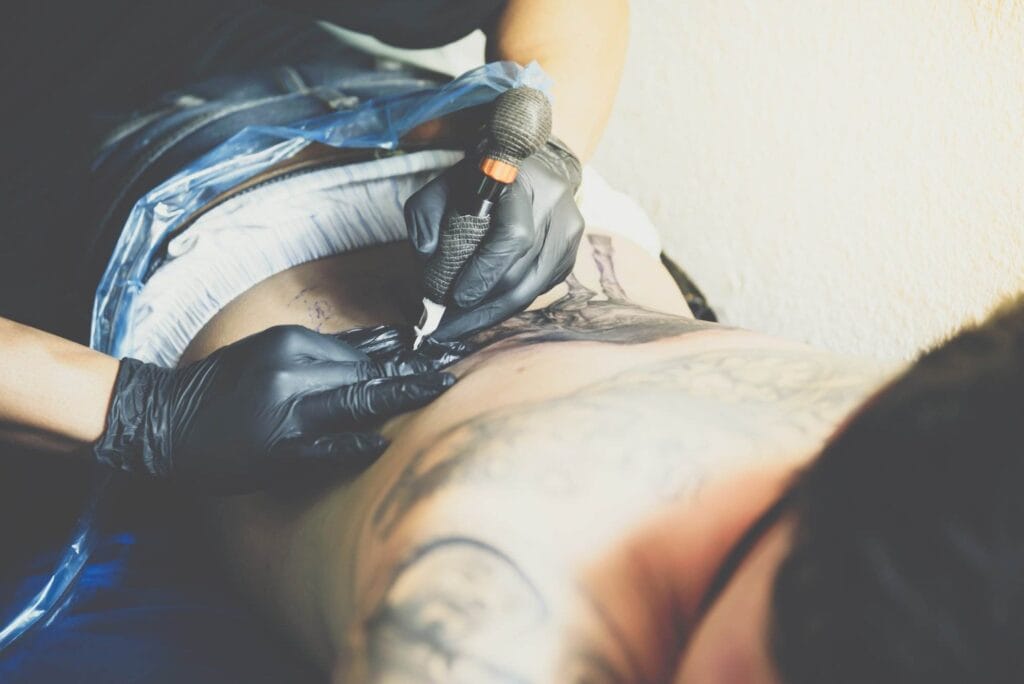
As anyone who has experienced it can attest, the pain of getting a tattoo is far from uniform. Numerous factors can influence how much discomfort one feels during the process. Understanding these factors can help individuals prepare adequately for their tattoo journey. Let’s dive into the key elements that affect pain levels—skin sensitivity and body placement.
Skin Sensitivity
Skin sensitivity varies from person to person and can greatly influence the pain experienced during tattooing. Some individuals have naturally thinner, more sensitive skin, which can heighten discomfort levels.
- Genetic Factors: Genetics play a role in skin sensitivity.
- Hydration and Health: Well-hydrated skin tends to be more elastic and less sensitive to pain.
Many tattoo seekers often overlook their skin’s condition before a session. Individuals with pre-existing skin conditions, such as eczema or psoriasis, may experience heightened discomfort, making one’s overall skin health an important factor to consider.
Body Placement
The body placement of a tattoo can significantly affect the levels of pain experienced. Areas with more nerve endings or less muscle and fat tend to be more sensitive.
- Sensitive Areas: Sites like the ribcage, spine, or armpits are notoriously painful.
- Thicker Skin Zones: Locations like the forearm, calf, and thigh generally yield a more painless experience.
Your choice of tattoo location will not only influence pain levels but also affect healing times and visibility. Being aware of these areas can direct people toward a more comfortable tattooing experience. By considering skin sensitivity and body placement, individuals can make informed decisions that align with their pain tolerance levels and expectations for their tattoo process.
Tips for Managing Tattoo Pain
While understanding the factors that affect tattoo pain is crucial, having a toolkit of strategies to manage discomfort can make the tattoo experience much more enjoyable. With the right preparation and mindset, tattoo enthusiasts can significantly alleviate the pain they might encounter during their session. Here are some essential tips to consider.
Stay Hydrated
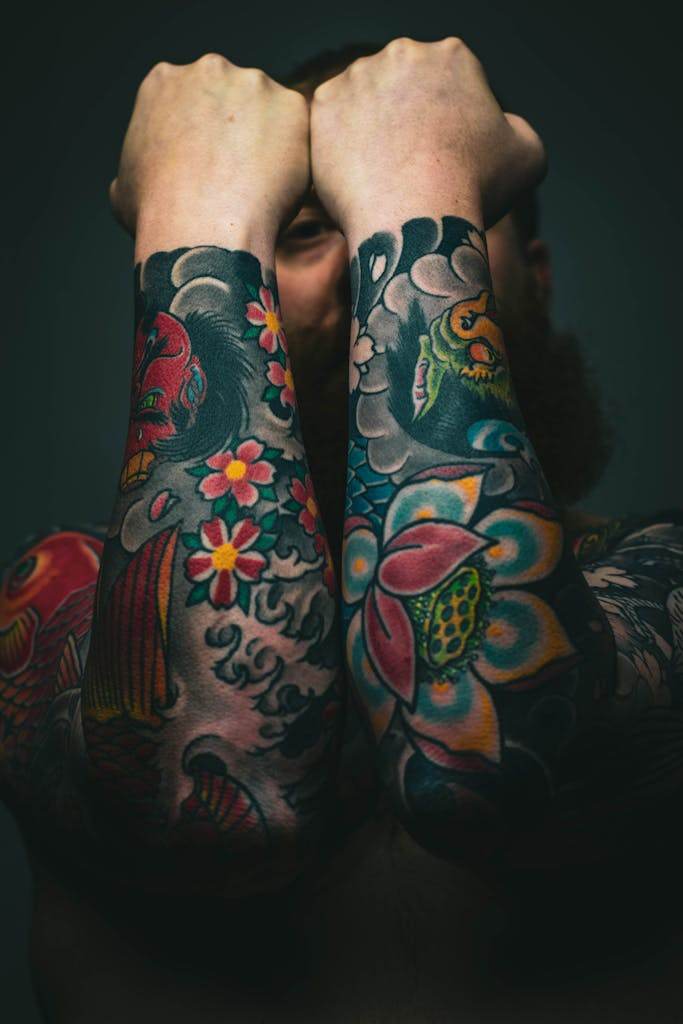
One of the simplest yet most effective ways to manage tattoo pain is to stay hydrated. Proper hydration benefits the skin, making it more resilient and less sensitive.
- Benefits of Hydration:
- Improved skin elasticity, which can lessen pain.
- Enhanced healing process post-tattooing.
Consider drinking plenty of water in the days leading up to your appointment; this can help in creating a more comfortable tattoo experience. It’s also wise to avoid excessive caffeine and alcohol, as these can dehydrate the body and heighten sensitivity.
Consider Pain Relief Options
Exploring pain relief options can be beneficial in easing discomfort during a tattoo session. Various approaches can be employed based on personal preference and medical advice.
- Topical Numbing Creams: Apply these creams before your appointment to reduce sensitivity in specific areas.
- Over-the-Counter Pain Relievers: Taking non-steroidal anti-inflammatory drugs (NSAIDs) an hour before your session can help minimize pain, but consult a healthcare professional for guidance.
Many tattoo seekers report that a well-timed distraction, like music or conversation with the artist, can also help mitigate pain levels. By incorporating these pain management strategies, individuals can approach their tattoo sessions with a positive mindset, enabling them to focus more on the art itself rather than the discomfort. With the right preparation, tattooing can be a gratifying experience.
Conclusion
As we wrap up this exploration into the world of tattoo pain, it’s clear that the journey to getting inked involves more than just design choices. From understanding the most and least painful places to consider, to recognizing the factors that can influence discomfort, knowledge is power when it comes to making informed choices about body art.
Key Takeaways
- Painful Areas: The ribs, spine, and armpits are often the most sensitive spots, while the forearm, calf, and thigh provide a more manageable experience.
- Individual Variability: Everyone’s pain threshold varies, so personal experiences may differ.
- Pain Management: Staying hydrated and exploring pain relief options can significantly enhance the tattoo experience.
For those contemplating their first tattoo or considering a new design, it’s essential to take these insights into account. Preparing both mentally and physically can transform the experience from one marked by anxiety to one filled with excitement and anticipation. Remember, a tattoo is not just a mark on your skin; it’s an expression of art and identity that lasts a lifetime. By acknowledging the pain factors and implementing strategies for pain management, individuals can focus on the meaning behind their tattoos and enjoy the creative process fully. Going into a tattoo session armed with the right knowledge and coping strategies can open the door to a fulfilling life experience that celebrates personal expression. Ultimately, each tattoo tells a unique story—embrace it with confidence!

